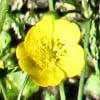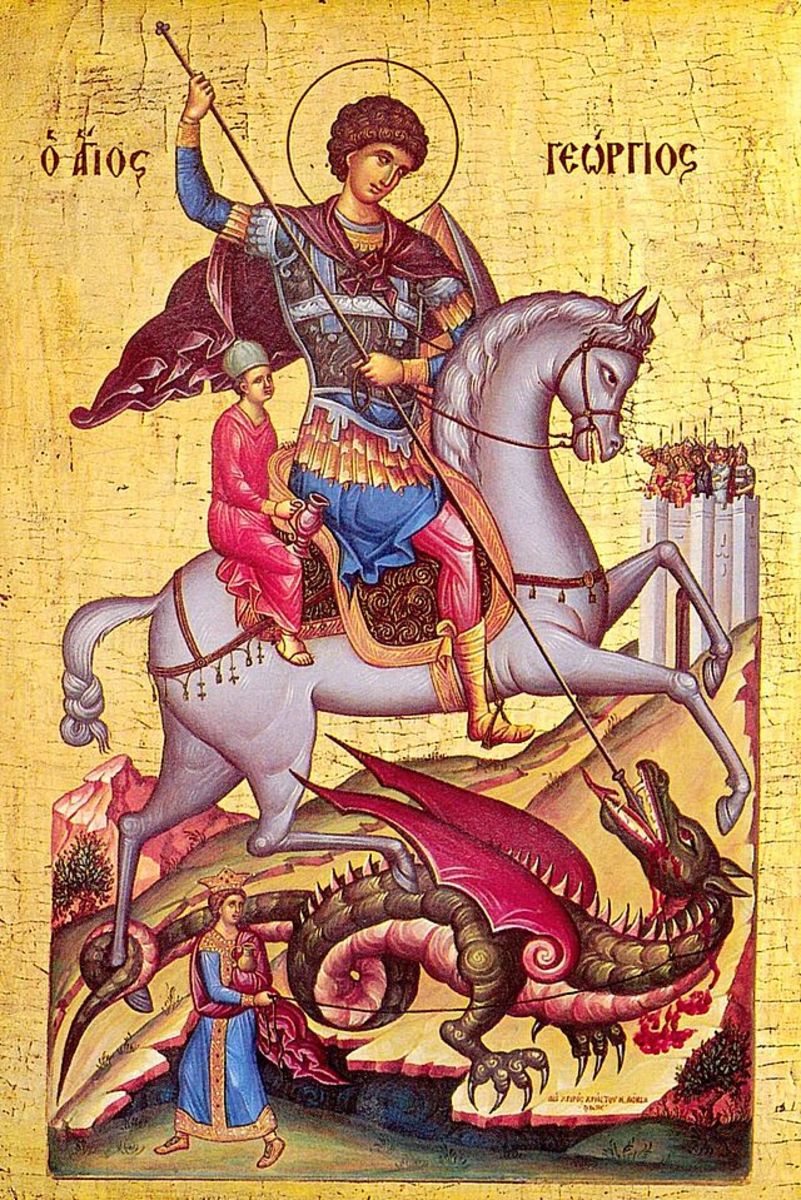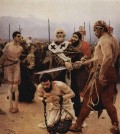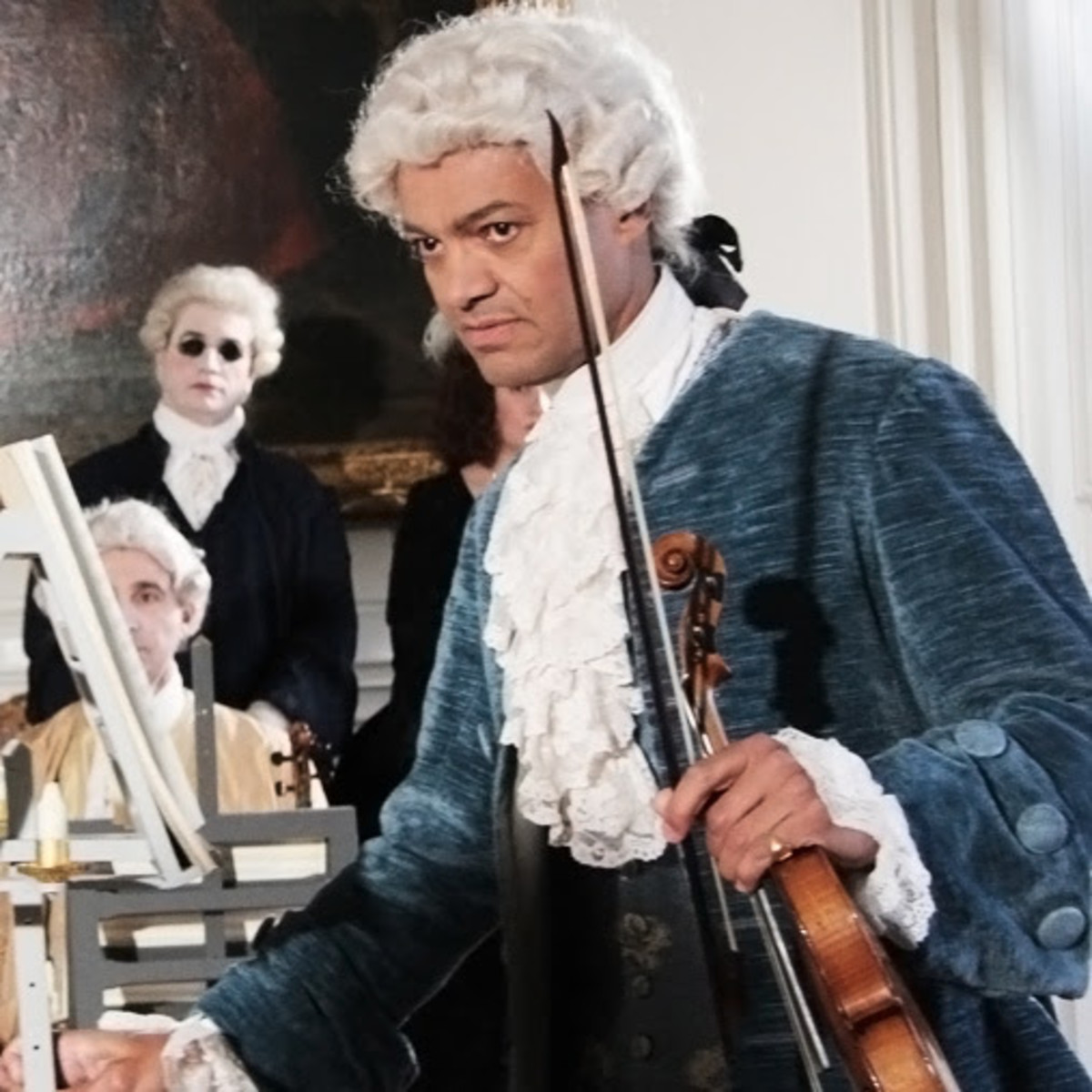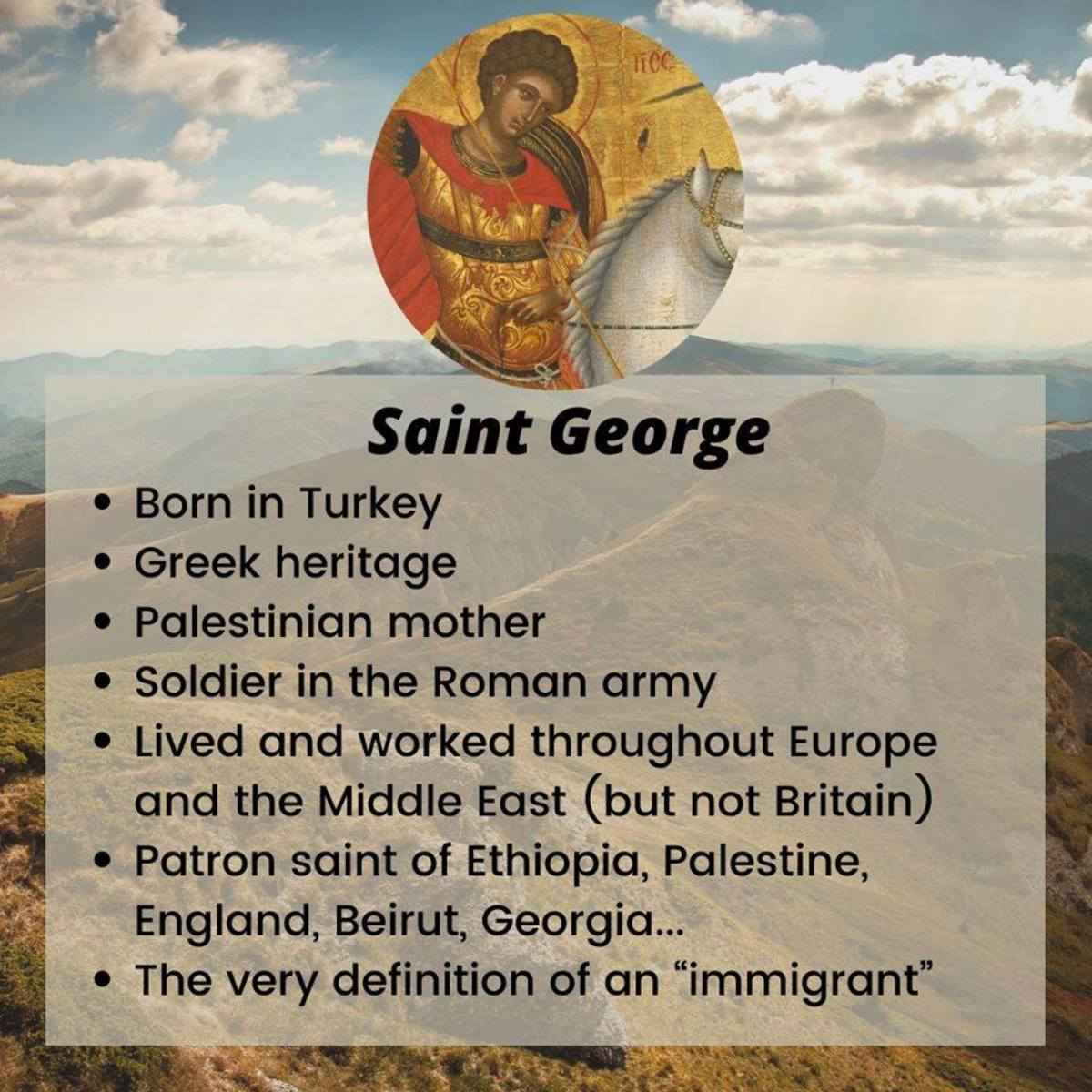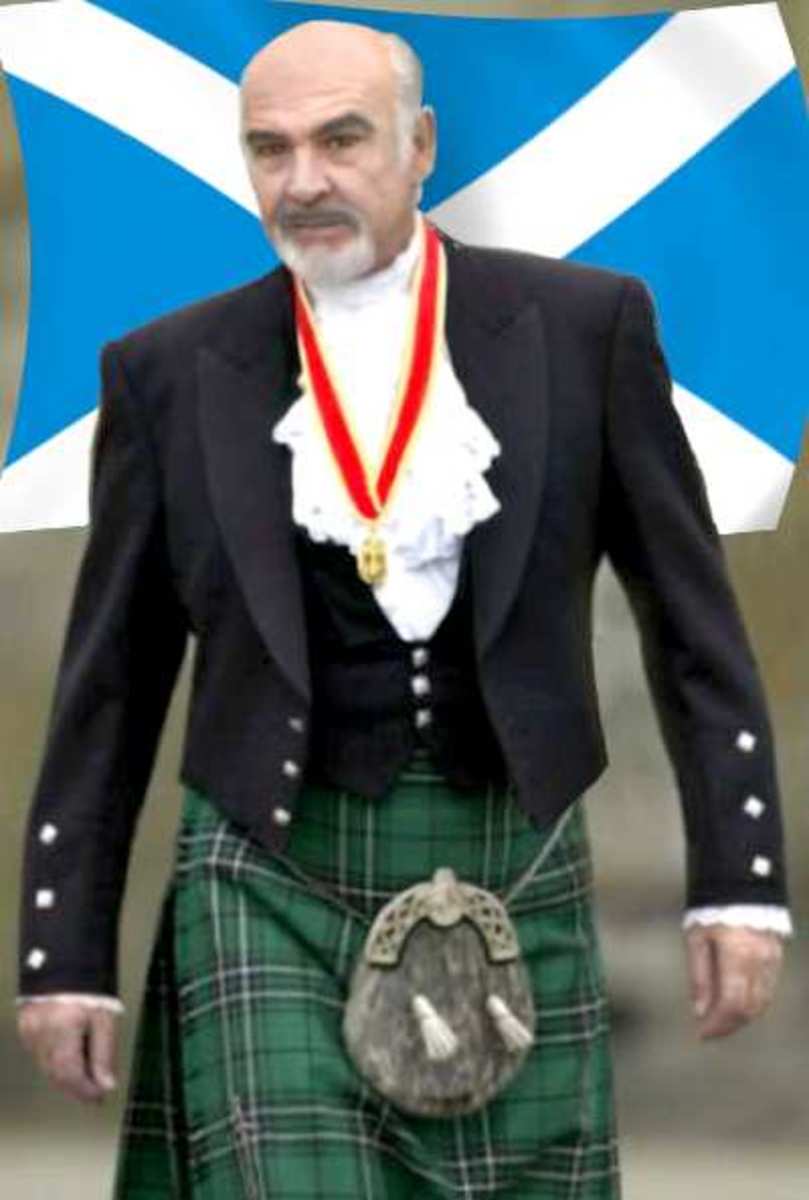Saint George, Patron Saint of England ~ ~ (St George's Day)

Saint George and England
What is the true story of Saint George and his connections to England and the English?
* * * * * * * * * * * * * *
Saint George is the Patron Saint of England.
His feast day is celebrated, annually, on 23rd April.
~ ~ ~ ~ ~
Coincidentally, and seemingly appropriately, this is also the date chosen to celebrate the birth of English playwright and poet, William Shakespeare.
~ ~ ~ ~ ~
But, back to St George!
Who is ~ or was ~ this George?
And how did he become the patron saint of the English?
Was he a Templar knight?
One hears of 'George and the Dragon' ...
But was he really a 'dragon-slayer'?!
Time to find out more!
* * * * * * * * * * * * * *

The 'Acta Sanctorum'
A life of Saint George ~ possibly true, possibly mythical, probably semi-mythical ~ can be found in the 'Acta Sanctorum'. This record of the 'Acts of the Saints' was a Jesuit project, initiated by Heribert Rosweyde (1569-1629). This work was continued after Rosweyde's death by Jean Bolland. The project was such a large undertaking that Bolland took on an assistant, Godfrey Henschen, and they completed the first two volumes of the work by 1643, when they were published. Daniel van Papenbroeck joined Bolland and Henshen in 1659. Twenty-four volumes of the 'Acta' had been published by the time Henschen died, in 1681, and he had prepared many notes for future volumes. These scholar hagiographers were named for Jean Bolland and called 'the Bollandists'. The group still exists and continues to work on the lives of the saints.
Amongst the Bollandist sources was the 'Bibliotheca Hagiographica Graeca'~ Greek hagiographical papers, http://en.wikipedia.org/wiki/Bollandist
What the experts say!
I have trawled through Internet websites and encyclopedias, and this is what I have discovered:
There are no known records of George, or his life and works ~ there are only legends.
The first person we know of, to have taken an interest in attempting to discover the 'real' Saint George was Aloysius Lippomani, the 16th century Bishop of Bergamo (who attended the Council of Trent).
Then, in the 17th century, 'the Bollandists' took up the research. This small group of Jesuit researchers produced a 'life' of George, in the 'Acta Sanctorum'. ~ the 'Acts of the Saints'.
An attractive Window of George and the Dragon

Richard I and St George.
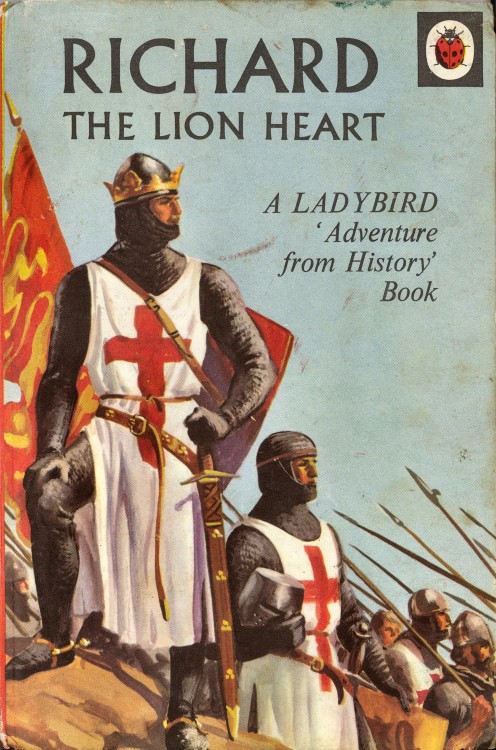
Siege of Antioch - Medieval Miniature - White Crosses on Red
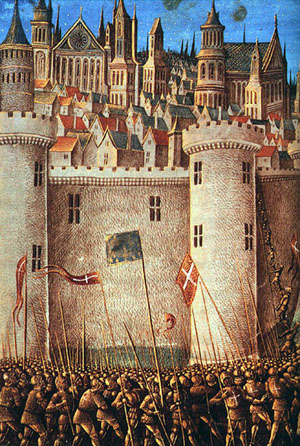
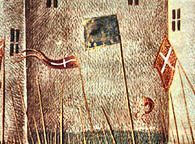
What do the legends say?
George is believed to have been born in Cappadocia (now Turkey), some time in the 3rd century AD, to Christian parents ~ or, at least, to a Christian mother and a pagan father ~ but, after the death of his father, possibly when he was about 14, he is said to have moved to his mother's native Palestine, where she owned an estate. He is said to have become a soldier in the Roman army, possibly becoming a 'Tribune'.
His parents may have been named Gerontius and Polychronia. Gerontius may have been a Senator from Cappadocia. Alternatively, other stories give the names Anastasius and Theobaste.
George is later believed to have been imprisoned, tortured, dragged through the streets and beheaded, at Diospolis (Lydda or Lod), after protesting against Rome's cruel treatment of Christians, implemented by the Emperor Diocletian, in about 303 AD, and refusing to pray to Rome's pagan gods. The execution reportedly occurred on April 23rd.
At this stage he was, apparently, a Christian martyr, but there was no mention of a knight on a stallion, carrying a white flag with a red cross; nor any mention of damsels in distress; nor the slaying of dragons.
Indeed, when writing of St George, Pope Gelasius: said that he was one of those "whose names are rightly reverenced among us, but whose actions are known only to God".
By the 6th century, his following was growing and he was admired as a Christian, a soldier and martyr, particularly amongst Greek Egyptians, but also as far afield as England, and by the 7th century there were, apparently, images of him in the windows of European churches.
Since George was a soldier and a martyr, it is not, perhaps, surprising, that he became the patron saint of soldiers, and that he was, therefore, particularly beloved of the crusaders ~ and linked with those other Christian solders, the knights of Christ ~ or the Knights Templar.
The red cross may have become associated with him at this time. Certainly it was a symbol associated with the crusading Templars. (Knights Templar)
At the same time, he would have become associated with medieval ideals of chivalry ~ including saving young maidens from monsters.

Arculf
Arculf was a Christian and a traveller. He may have been a monk; he may even have been the Bishop of Périgueux. During the latter part of the 7th century he went on a pilgrimage to the Holy Land.
When he returned to the West, he brought fascinating stories with him. It was Arculf who brought the legend of George to Britain, when his ship was apparently blown off course and he landed on the Scottish Island of Iona.
He was made welcome at the abbey there and the Abbot, Saint Adamnan (also the biographer of St. Columba), wrote the story of Arculf's travels in his book 'De Locis Sanctis'. The Venerable Bede summarised this in his 'Ecclesiastical History of the English People'.
This would have been the early legend ~ possibly based on some truth ~ not the story of magical dragons and trusty steeds, which date from a later time ~ the 'Age of Chivalry'..

Adam, Eve, Serpent - or 'Dragon'?
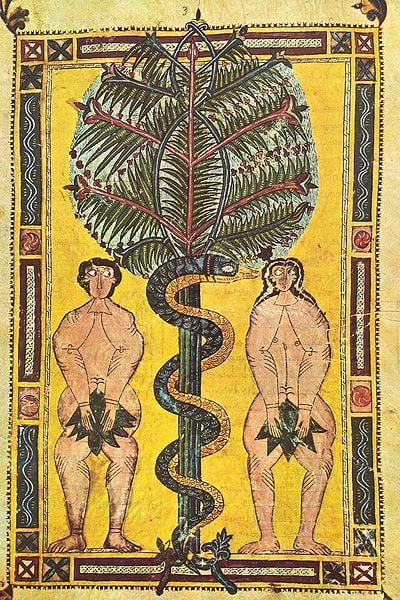
George the Dragon-Slayer
The story
Once upon a time, possibly in in Libya, a good man came across a beautiful, but sad, princess.
When he asked her what was the matter, she urged him to go away, quickly, and forget all about her, but this young man, George by name, could never have abandoned a damsel in distress and he soon discovered her story.
She was on her way to be fed to a hungry dragon, who was terrorising the realm. Lots were being drawn, in order to choose each victim in turn.
Today, the princess's name had been chosen.
George knew that he had to slay this dragon, in order to save the princess and her people ~ and this is exactly what he did.
In return, the king, the princess and their people agreed to be baptised Christians. Then the king founded a Christian church, dedicate to 'Our Lady and Saint George'.
So, George saved them in more ways than one.
The story was popularised by the 'Acta Sanctorum'
The symbolism
Dragons were also called serpents.
It was the serpent who tempted Eve in the Garden of Eden.
The serpent has been made the equivalent of Satan, the devil.
So this was a Saintly Knight of Christ, bearing the banner of Christ, fighting the evil serpent.
Good versus Evil.
God Versus the Devil.
Heaven versus Hell.

Heroes and Dragons
From Alexander Barclay's 'The lyfe of saynt George', 1515
'Upon her wings and on her back on high
Were green rough scales like iron of hardness
If Hercules for all his hardiness
With bill or club had run this dragon to
He should forsooth have found enough to do'.
*
Translated from Baptista Spagnuoli's 'Georgius', (1507)
Printed in 'The Life of St. George'.
Edited by William Nelson (1960).
* * * * * * * * * * * * * * * * * * * *
Other Dragon Killers?
In mythology, there are numerous dragon- or monster-slayers. George is not alone!
Examples include Perseus, Beowulf, Mercurialis and others.

St Edward the Confessor - England's Patron Saint Before George and King of England
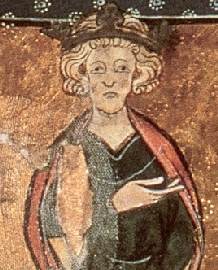
Edward III and the Patron Saint of England
When did George become patron saint of England?
This may have been after Edward III founded the Order of the Garter, and made George its patron saint. This was in the 14th century.
However, according to a 13th century record, during the reign of Edward I, the kings troops carried pennants showing the red cross ~ the cross of St George ~ on a white background, and there is some evidence that English ships were also flying this flag in the latter 13th century.
It is said that George may have been readily adopted by the English people, because his story was very similar to that of one of the Anglo-Saxon heroes.
England's Patron Saint AFTER George??! - Saint Alban?
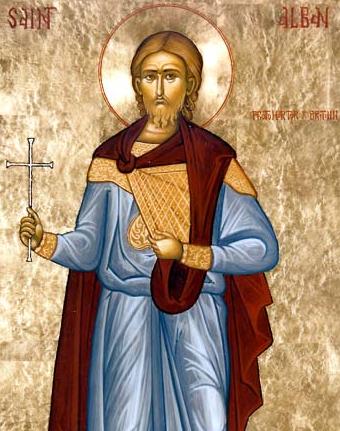
Other Patron Saints of England?
Saint Edward:
Prior to St George, the saint, who was generally considered patron of the land ~ or, at least, one of the national saints ~ was the late old Anglo-Saxon king, Edward the Confessor, remembered for his piety.
Edward was crowned king at the old English capital city of Winchester, in 1043. He had been born in around 1003, son of Aetheldred the Unready. His mother was Emma (whose second husband was England's Danish King, Cnut (Canute).) Edward died in 1066.
Pope Alexander III declared Edward a saint in 1161. His feast day is 13th October.
***
Saint Alban:
Since George was never really connected with England, it has been suggested that a new, more suitable, patron saint should be chosen.
One name that has been put forward is that of Saint Alban.
Apparently, Alban was a pagan, who converted to Christianity during Roman times, and became the first British martyr for his Christian faith.
His decaptation took place near the site of the Abbey of St Albans. He is remembered annually on 22 June

Cry, God for Harry, England, and Saint George!
Once more unto the breach, dear friends, once more, Or close the wall up with our English dead!
In peace theres nothing so becomes a man As modest stillness and humility:
But when the blast of war blows in our ears, Then imitate the action of the tiger;
Stiffen the sinews, conjure up the blood, Disguise fair nature with hard-favoured rage;
Then lend the eye a terrible aspect;
.......
Now set the teeth, and stretch the nostril wide,
Hold hard the breath, and bend up every spirit To his full height!
On, on, you noblest English,
Whose blood is fet from fathers of war-proof!—
......
Dishonour not your mothers; now attest That those whom you called fathers did beget you!
Be copy now to men of grosser blood, And teach them how to war.
And you, good yeomen, Whose limbs were made in England, show us here The mettle of your pasture; let us swear That you are worth your breeding—which I doubt not;
For there is none of you so mean and base That hath not noble lustre in your eyes.
I see you stand like greyhounds in the slips, Straining upon the start. The games afoot!
Follow your spirit, and upon this charge
Cry, God for Harry, England, and Saint George!
Shakespeare and Saint George
When William Shakespeare had Henry V call to his men, before the Battle of Agincourt, 'Cry God for Harry, England and Saint George!', was he making it up? Was it simply great poetry ~ a great phrase that Henry should have used? Or was it in any way real? Did Shakespeare know, or believe, that Henry really had made such a rousing speech?
This reference, by Shakespeare, to Saint George, is unusual in English literature. So it is quite fitting that the day that we remember Shakespeare (the day believed to have been his birthday) is the same day that we celebrate Saint George ~ 23rd April.
Laurence Olivier's film of the play came out in 1944 ~ during 'World War Two' ~ so it was an ideal piece of encouraging wartime propaganda.
Henry V

The Faerie Queene
Saint George and the Faerie Queen
'The Faerie Queen', an Arthurian romance and allegory of the virtues, was written by Edmund Spencer, dedicated to Queen Elizabeth I, and published, incomplete, in 1596. (He had it roughly planned out by 1589, when he wrote to sir WaltyerRaleigh on the subject.)
It is a very long poem, written as a series of books. In each one, a particular knight has to succeed at a virtuous quest. For example, the 'Red Crosse Knight of Holinesse' had to slay a dragon, in order to escape the witch Duessa. It seems clear that a knight who bears a red cross, and who kills a dragon, must represent Saint George.

George: English Saint and Kings
Some George + Dragon Pubs
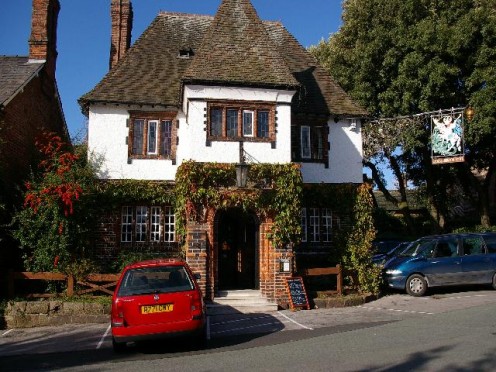
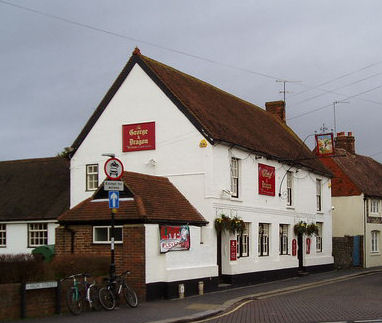
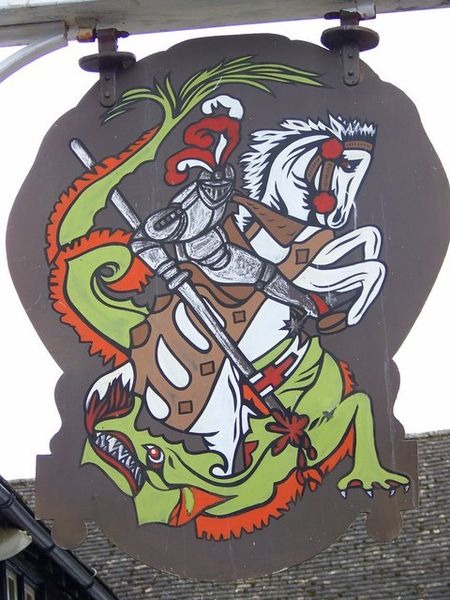
The Name 'George'
The English name 'George' originated with the Greek word: 'γεωργός', transliterated: 'geōrgos'
In Greek this was made up or two elements:
1) ge ~ this meant 'soil' or 'earth'
2) ἔργον ~ this meant 'worker'
It can thus be seen that the word meant 'worker of the soil' ~ or what we would term 'agricultural labourer' or 'farmer'.
In Greek, it became a given name ~ 'Γεώργιος' ~ or 'Geōrgios'.
Latin borrowed it as 'Georgius'.
In English, it became George.
*
How popular is, and was, the name 'George' in England?
George Redmonds* has examined the poll tax returns for 1377 to 1381, for ten counties, recording adult names. He was struck by how few given names were actually used ~ fewer than 80. 'John' and 'William' were the most popular names, but 'George' was generally considered 'rare'. However, Redmonds indicates that in some areas it had become quite popular by 1550, and he believes that this is because it became a family name; used by a number of relatives living in the same neighbourhood.
Interestingly, from 1538 to 1700, the name 'George' remained in the top ten most popular boys' names. In 1415, following England's success at the Battle of Agincourt, Archbishop Chichele had made St George's Day one of England's main feast days and George was acknowledged as a major patron of the country. It is not surprising, therefore, that the name became a popular one ~ and remained so, after 'The Reformation'.
In 1925, George was the third most popular boys' name.
*Reference: 'Christian names in Local and Family History' by George Redmonds
Where did George come in recent charts for popular names?
This may be for Scotland only??
1900: George = 6th
1950: George = 8th
1976: George = 36th
2005: George = out of the top 100
in England and Wales:
2006 George = 14th
2007 George = 12th
2008 George = 12th
2009 George = 11th
* * *
King George:
Usage of the name in Britain may have been affected by the number of monarchs named George. Between 1714 and 1830, Britain had only four monarchs ~ all named George.
Since then, there have been two more: George V, who reigned from 1910 until 1936, and his son, George VI, who reigned from 1936 until 1952.
The female version of the name is 'Georgina' or 'Georgiana'.
The Gaelic version of the name 'George' is 'Deorsa'.
* * *
Pubs and Inns
A number of English public houses (pubs) and inns have been named after George and the Dragon, resulting in some interesting and attractive inn signs.

George and Dragon
How do the English feel about St George's Day?
A couple of extracts from the St George's Day blog of Scott Alexander Young
'Cry God for Harry, England & old Saint George’ ~ Or not, as the case may be.
'Today of course, is Saint George’s Day. Which means the more patriotic (jingoistic?) kind of Englishman will be sporting the flag of Saint George; whether worn as a t-shirt over a bulging lager belly, as a tasteful bit of face painting, or a painted cross worn over an equally dashing shaven head.'
'So, plenty of reason to feel good about the flag of Albion? Perhaps not. For one thing, in the last decade or so, the flag of Saint George has been adopted by some pretty dubious groups within English society. Football hooligans, for one thing. The BNP, or British National Party, for another.'
http://trueslant.com/scottyoung/2010/04/23/cry-god-for-harry-england-old-saint-george
* * *


How do the English feel about George's Day?
From A lecture delivered by Rt. Hon. John Denham MP, 5 March, 2010
'The [2008] British Social Attitudes survey ... asked people how they feel about the cross of St George. ... Four out of five of the English population say that they feel a strong sense of belonging to England.
'This summer during the World Cup, many English people of all ethnic origins will fly the St George’s Cross with pride. It was not always the case. ... In the 1970s and 1980s many English people did not want to fly the flag for fear of being identified as a white nationalist racist ....'
'... we need to generate powerful new ways of bringing people together to celebrate their Englishness .... Ways which go beyond the purely historical. Too often, celebrations of Englishness ... focus wholly on the past. ... This isn’t true of .. St Andrew or St Patrick’s Day – they are about what it means to be Irish or Scottish in today’s world ....'
'I would suggest that the starting point should be to develop the festival of St Georges Day itself. ... Actually bit by bit, this has been developing .... across the country.'
'[Make] ... St George’s Day a celebration of a modern inclusive Englishness within the wider Britain.'
'I have not been able to identify another country in the world which does not have a day to celebrate its national identity.'
http://www.socialistunity.com/?p=5356

How do the English feel about George's Day?
Cry: God for Harry! England and Saint Who? ~ Anne McElvoy, The Independent, 1999
'Most ordinary Britons are completely unmoved by St George's Day ..... it seems that St George's Day is only really celebrated by right-wing newspaper columnists.'
http://www.faqs.org/abstracts/Retail-industry/Cry-God-for-Harry!-England-and-Saint-who-Never-underestimate-a-rich-mans-anger-when-forced-to-resign.html#ixzz0mJ8miww7

How do the English feel about George's Day?
CELEBRATING GEORGE'S DAY?
Bernard Manning
'It doesn't really mean anything to me. He was Welsh, this George, wasn't he? .....'
Margaret Drabble
'... I really don't know who St George was, I suspect some sort of legend ... I don't embrace the narrow patriotism which he represents. .... As Dr Johnson said: 'Patriotism is the last refuge of a scoundrel'. ....'
Lord Taylor of Warwick
'.... The BNP have captured the flag of St George, but they do not seem to know the history. .... People should have pride in their country, as long as it is not racist.'
Joan Bakewell
'I never bothered as a child, and was almost unaware of it. ... ... The nicest place I have ever spent St George's Day was in Stratford-upon-Avon, celebrating William Shakespeare's birthday.'
Garry Bushell
'It's great that it's being celebrated on EastEnders this year. I feel vindicated. Last year, they did St Paddy's day, US Independence Day, even a muted Diwali festival .....'
Shami Chakrabati (Director of Liberty)
'... it would be valuable if St George's Day were to be reclaimed by those who represent true English values of justice, democracy and pluralism. Just because we have seen racists appropriating the flag, we should not let the symbols go without a fight.'
From:
'Cry God for Harry, England, and, eh, Saint who, exactly?' - Peter Stanford
The Independent, Friday, 23 April 2004

Another Story - George and England
A tale is told about Saint George battling and killing at least one dragon in England.
However, it is extremely unlikely that he ever set foot on English soil.

George and Dragon Statue
- Dragonslayer, Marietta, Georgia
Statue commemorating the battle between St. George and the dragon.
Related Article:
- St. Georges Day And Why Its Great To Be English
By Nell Rose: "Celebrate St. Georges Day and discover why being English is great!"

